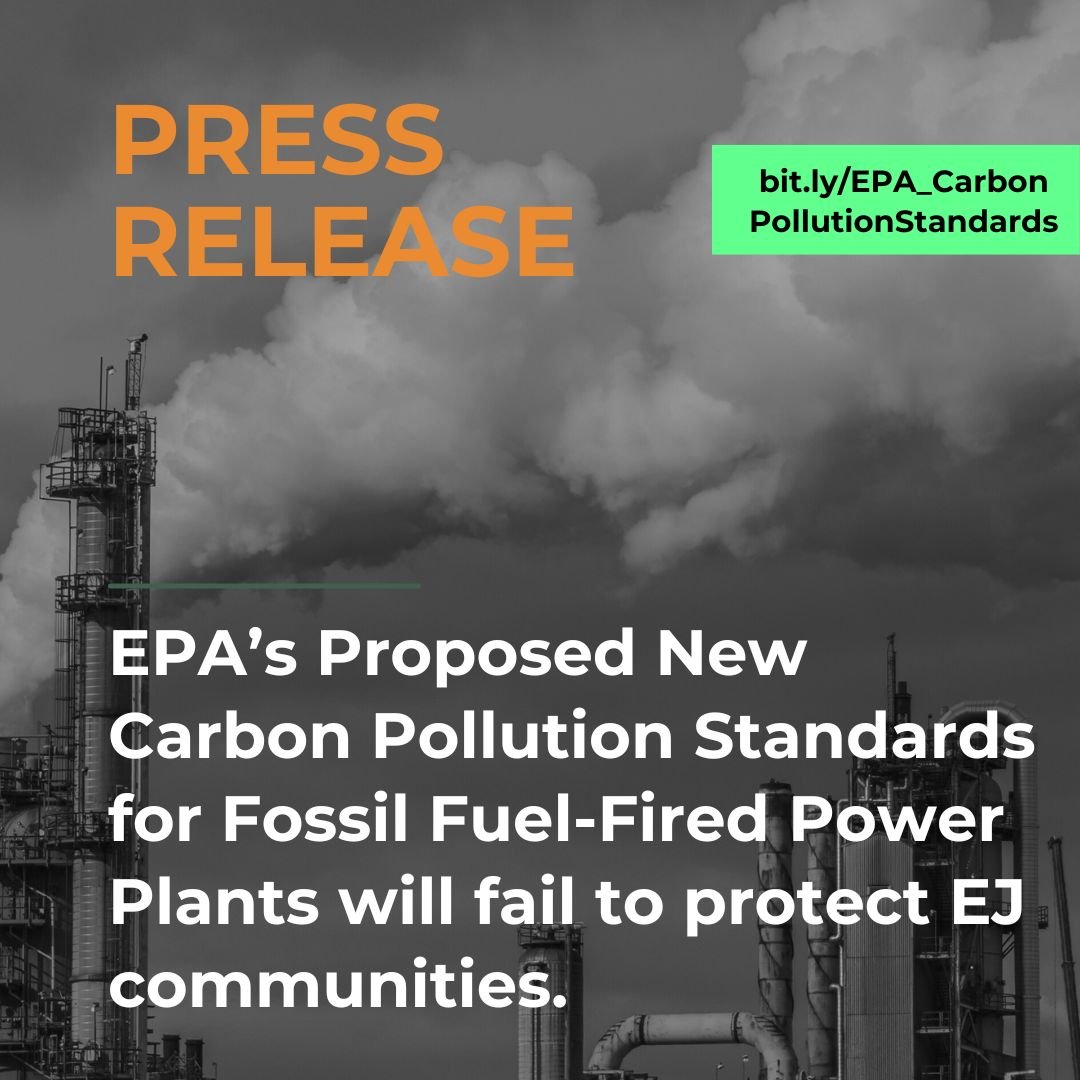Press Release: EPA’s Proposed New Carbon Pollution Standards for Fossil Fuel-Fired Power Plants Will Fail to Protect EJ Communities
 WASHINGTON (August 8, 2023) –The Tishman Environment and Design Center at The New School, the Center for the Urban Environment of the John S. Watson Institute for Urban Policy and Research at Kean University, the New Jersey Environmental Justice Alliance (NJEJA), and the Center for Earth, Energy and Democracy, along with 18 environmental justice and 9 allied organizations are submitting public comments today on the Environmental Protection Agency (EPA)’s proposed carbon pollution standards for coal and new natural gas fired power plants.
WASHINGTON (August 8, 2023) –The Tishman Environment and Design Center at The New School, the Center for the Urban Environment of the John S. Watson Institute for Urban Policy and Research at Kean University, the New Jersey Environmental Justice Alliance (NJEJA), and the Center for Earth, Energy and Democracy, along with 18 environmental justice and 9 allied organizations are submitting public comments today on the Environmental Protection Agency (EPA)’s proposed carbon pollution standards for coal and new natural gas fired power plants.
Environmental justice (EJ) communities are on the frontlines of the adverse impacts of climate change and are disproportionately exposed to a wide range of polluting industries, including fossil fuel infrastructure like coal plants, natural gas plants, and pipelines. The use of carbon capture and sequestration (CCS) mechanisms and hydrogen co-firing in the power sector will further harm EJ communities that are already overburdened. The only real solution to climate change is the rapid and complete transition of the power sector away from all types of fossil fuels to energy efficiency and renewable energy in the form of wind and solar power. We call attention to critical EJ concerns related to the proposed rule that would hinder a reliable, just, and truly clean power section transition.
The EPA will finalize the standards in the coming months.
The following is a comment from Dr. Ana Baptista, The Tishman Environment and Design Center at The New School
“Addressing climate change and decades of toxic exposure experienced by environmental justice communities means moving away from a dependence on fossil fuels and investing instead in renewable energy sources and infrastructure in communities. Supporting carbon capture and sequestration (CCS) and hydrogen co-firing in the power sector through massive amounts of public funding and policies like EPA’s proposed rule will perpetuate the fossil fuel industry, to the continued detriment of EJ communities. These same overburdened communities have time and again been sacrifice zones to unjust policies and infrastructure that place them on the frontlines of fossil fuel polluting structures. Environmental justice should be a priority for the EPA’s power sector rule rather than an afterthought . We urge the EPA to take seriously the environmental justice implications of this rule and consider cumulative impacts in decision-making processes related to the rule.”
The following is a comment from Dr. Nicky Sheats, John S. Watson Institute for Urban Policy and Research at Kean University
“Too many low-income communities and Communities of Color around the country are exposed to the harms of all types of polluting infrastructure and have disproportionately borne these cumulative burdens for too long. It’s time to right these wrongs. EPA’s proposed rule all but recognizes that CCS and hydrogen co-firing will add to toxic air pollution in communities living near power plants, and this is unacceptable when such communities already live with an unfair share of cumulative impacts from pollution. The EPA’s proposed carbon pollution standards must adopt a more affirmative approach toward environmental justice to address cumulative impacts. ”
The following is a comment from Melissa Miles, New Jersey Environmental Justice Alliance
“A rapid, clean energy transition is indispensable to ensure that current and future generations have healthy and safe communities to live, work, play, learn, and worship in. We need policies that mandate emissions reductions in EJ communities and ensure the closure of fossil fuel powered plants first and foremost in EJ communities. The EPA’s proposed carbon pollution standards are an opportunity for the EPA to create equitable policies that truly center communities on the frontlines and bring us to a clean energy transition and just future for all.”
The following is a comment from Bill Gallegos, Center for Earth Energy & Democracy
“We know that overwhelmingly the burden of pollution from fossil fuel powered power plants is borne by low income communities, communities of color and indigenous communities. We also know that the impacts of rising intensive heat cycles, extreme temperatures and the resulting power outages are experienced most acutely by environmental justice communities. We are at a critical juncture in our nation’s history. We must meet the challenge of climate change like never before – in ways that center environmental justice communities. We urge the EPA to uphold its commitment to environmental justice and create policies that reduce carbon pollution from the power sector in ways that create benefits for environmental justice communities.”

